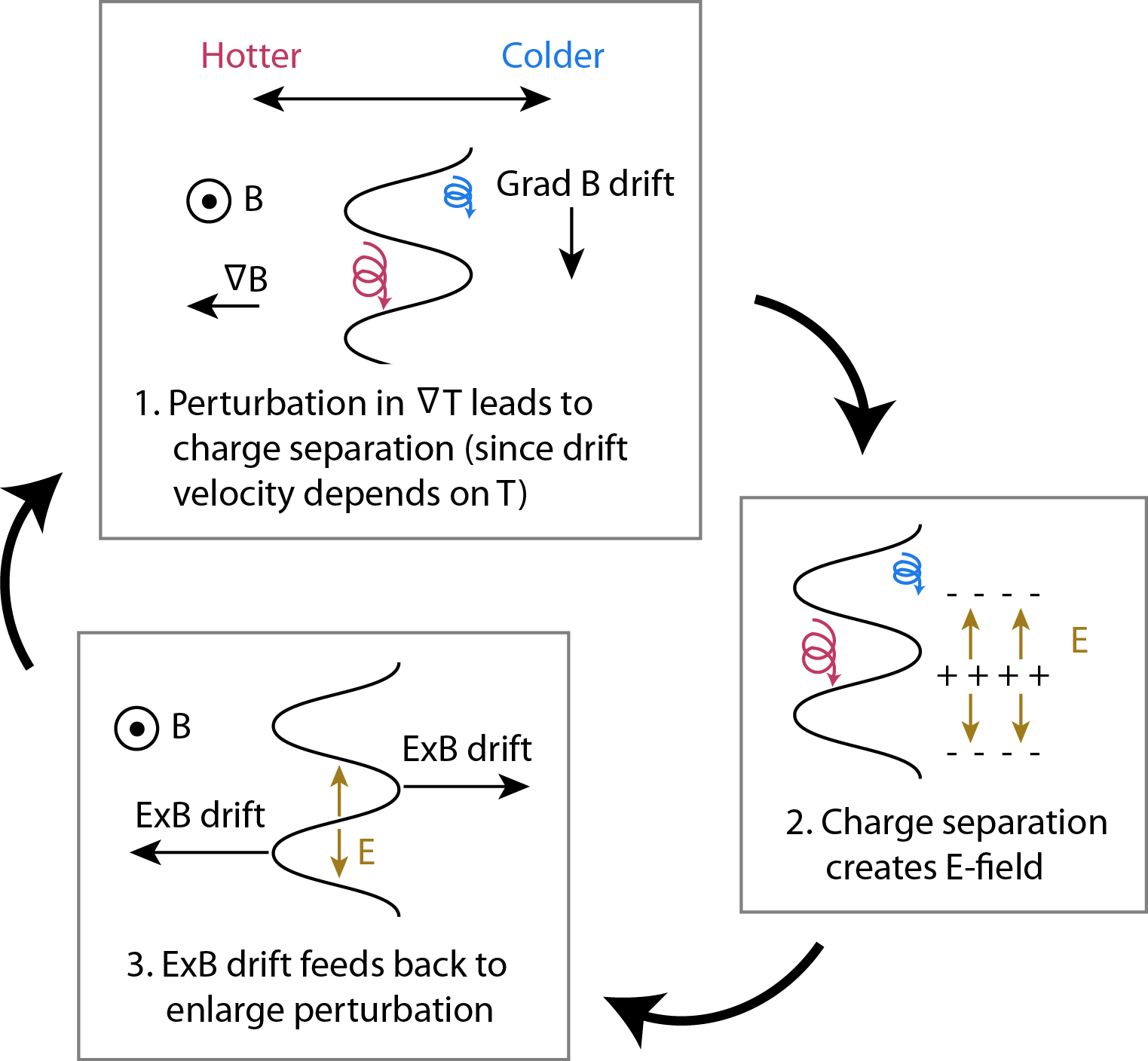Ion Temperature Gradient instability: Difference between revisions
(Created page with "The ion temperature gradient (ITG) instability is a microinstability in tokamaks relevant to turbulence and the associated anomalous transport. The instability occurs due to ...") |
No edit summary |
||
| Line 5: | Line 5: | ||
Hence, if a temperature gradient is aligned with a magnetic field gradient (as occurs in a tokamak), particles in the hotter region will drift further. If there is a perturbation in the temperature gradient, then the difference in drift velocities will create charge separation. The charge separation creates a electric field. This electric field creates an ExB drift which increases the perturbation's amplitude. The positive-feedback nature of this loop leads to exponential growth of the instability. | Hence, if a temperature gradient is aligned with a magnetic field gradient (as occurs in a tokamak), particles in the hotter region will drift further. If there is a perturbation in the temperature gradient, then the difference in drift velocities will create charge separation. The charge separation creates a electric field. This electric field creates an ExB drift which increases the perturbation's amplitude. The positive-feedback nature of this loop leads to exponential growth of the instability. | ||
See the figure | See the figure for a graphical explanation. | ||
[[File:ITG.png]] | |||
Note that if the temperature gradient is anti-parallel to the magnetic field gradient, the ExB drift will suppress the perturbation rather than increase it. This situation occurs on the inner, "good-curvature" side of the tokamak. | Note that if the temperature gradient is anti-parallel to the magnetic field gradient, the ExB drift will suppress the perturbation rather than increase it. This situation occurs on the inner, "good-curvature" side of the tokamak. | ||
Revision as of 15:48, 18 October 2016
The ion temperature gradient (ITG) instability is a microinstability in tokamaks relevant to turbulence and the associated anomalous transport.
The instability occurs due to the nature of Grad-B drift. The Grad-B drift velocity of a particle (caused by a gradient in the magnetic field) is proportional to the particle's kinetic energy. Hotter particles drift further than colder particles.
Hence, if a temperature gradient is aligned with a magnetic field gradient (as occurs in a tokamak), particles in the hotter region will drift further. If there is a perturbation in the temperature gradient, then the difference in drift velocities will create charge separation. The charge separation creates a electric field. This electric field creates an ExB drift which increases the perturbation's amplitude. The positive-feedback nature of this loop leads to exponential growth of the instability.
See the figure for a graphical explanation.
Note that if the temperature gradient is anti-parallel to the magnetic field gradient, the ExB drift will suppress the perturbation rather than increase it. This situation occurs on the inner, "good-curvature" side of the tokamak.
